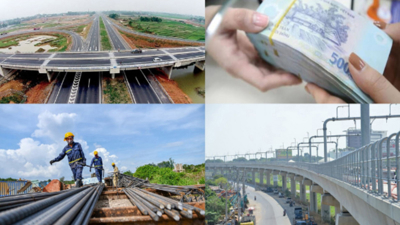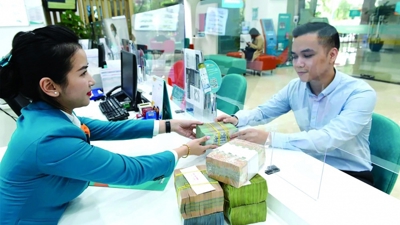Techcombank milestones reveal Vietnam’s potential
A record-breaking syndicated financing for one of Vietnam’s best performers makes a statement about investor sentiment towards both bank and country

The Vietnam Technological and Commercial Joint Stock Bank (Techcombank) has been creating milestones in recent times. At its AGM in April, it reported a 47.1 per cent increase in pre-tax profit year-on-year in 2021 to VND23.2 trillion ($995.09 million), making it the first non-State-owned commercial bank in the country to near the billion-dollar profit mark.
In June, it also set a capital raising milestone with a $1 billion syndicated loan facility over three to five years; the largest-ever medium to long-term syndicated loan for a Vietnamese financial institution. Euromoney caught up with Mr. Jens Lottner, CEO of Techcombank, at the conclusion of the deal, initially underwritten by Standard Chartered and UOB with ANZ, HSBC, and SMBC joining in as fellow mandated lead arrangers, underwriters, and bookrunners. The deal is considered a statement about Vietnam as well as Techcombank and gives an indication of investor appetite in a time of extreme global uncertainty.
According to Mr. Lottner, even though Techcombank had been in international markets twice before, with a $500 million syndication in 2020 and $800 million last year, it is now a relatively tough market. “But people are trying to get some exposure to Vietnam,” he said. “Even if it’s not investment grade, if you have a good name, it’s OK.” There are two themes: the Vietnam story and the Techcombank story. Mr. Lottner noted that Vietnam is doing phenomenally well as a country, with first-half GDP growth of 6.4 per cent, and while inflation is running at 8-9 per cent it is largely imported due to oil and certain commodities. “It’s not homemade inflation,” he said.
FDI is still pouring into the country, and the challenge is not demand but the ability to meet it, partly because of labor issues and partly land issues. “There is a huge need for infrastructure investment, and there are a lot of plans for new industrial parks,” he went on. The continued lockdown in China, coupled with existing US-China tensions, is a spur for companies wanting to build manufacturing capability in Vietnam. “But right now, land is really scarce,” he explained. “It’s more of a supply-side constraint and demand is actually quite large.”
Banks in Vietnam, as with most of Southeast Asia, came through Covid-19 in relatively good shape, assisted by support from central banks and policymakers that is now unwinding. “Non-performing loans (NPLs) are OK, though we see perhaps a little bit of an uptick with Covid-19 restructuring,” Mr. Lottner said. Vietnam has quite strict accounting methods around NPLs, and if a borrower defaults with anyone then every creditor has to declare this as an NPL, and a customer must be declared as an NPL if they are even a day late on repayments. “You will see an increase, but not anything comparable to 2012 and 2013,” he said. “There is not anything that is structurally dangerous.”
Mr. Bryan Liew, Head of the Leverage and Acquisition Finance Syndicate at Standard Chartered, said Techcombank has set the bar for the Vietnamese loan market “The wide representation of banks across tenors attests to the market’s belief in this credit and confidence in its medium- and long-term prospects,” he said.
Techcombank boasted a compound annual growth rate of 50 per cent in profits from 2016 to 2021, and there is a sense that it is best positioned to leverage digital trends in the manner of other regional leaders such as Singapore’s DBS and Indonesia’s Bank Central Asia. Ms. Lim Lay Wah, Head of the Global Financial Institutions Group at UOB, said Techcombank is pioneering the market for USD Sofer borrowings.
Vietnam is perhaps surprisingly accommodating about regulatory matters around technology, such as the use of the cloud. Techcombank has also made good progress in the more prosaic matters of banking, including net interest margins working well for the bank after a concerted effort to bring down the cost of deposits; the CASA ratio crossing 50 per cent in the fourth quarter of 2021 and staying there in the first quarter of this year, at 50.4 per cent despite growing competition; fees being strong, particularly in insurance; and the bank doing well in debt capital markets until issuance dried up during the last quarter. That followed an industry scandal, which led to the cancellation of nine bond issuances by the Tan Hoang Minh Group in April for disclosing false information.
In addition, there is optimism about the possibilities in the small and medium-sized enterprise (SME) segment. “When you start going into SMEs, if you don’t have a scalable model then it’s difficult,” Mr. Lottner said. “But I believe that at the end of the year we should be able to go into new credit areas and that should give us more flexibility.”







